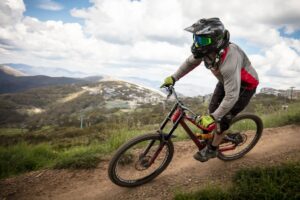Ferrypacking – Riding on the waves of adventure

I don’t know about you, but for me every moment I jump aboard a ferry feels like the start of a small holiday. The moment the boat, no matter how big or small, leaves the shore feels like the beginning of a journey.
Ferries have transported people in goods for more than 160 years in Scotland. While some islands now host small airports as well, for most islanders the ferries still provide the main connection between their homes and the Scottish mainland. Most of the ferries are run by CalMac, and the introduction of RET, Road Equivalent Tariff, makes journeys across the network very affordable, especially if you are travelling as foot passenger or by bike. Some ferries connect with trains and allow you to book ferry and train tickets in one transaction.
As with trains, bikes travel for free across the CalMac network, and most council and private providers operate with the same policy. There is even one connection, the short ferry journey across Loch Linnhe from Corran to Ardgour, which is still free of charge for foot passengers and cyclists.
Similar to Scotland, Norway also has an extensive network of ferries that operates across the fjords and to the islands. There are different operators across the country, and usually bringing a bike is no problem, but costs extra. On some connections, for example the Basto Fosen ferry between Moss and Horten across the Oslofjord, both passengers and bikes travel free. And if you are lucky, you’ll get to enjoy one of the first electric ferries in the world that operates on that route with zero emissions.
If you are after ferry travel in style, then Hurtigruten, billed by Visit Norway as the world’s most beautiful sea voyage, offers much more than just getting from A to B. The Hurtigruten vessels also offer shipping bikes from one harbour to another, which can be a handy service when hiring bikes at one end of the country, cycling and then returning them.
There are various ferry connections from Britain to the European mainland and Ireland, a more environmentally-friendly but often pricier alternative to flying. While they save emissions, they also save the hassle of boxing the bike, an often stressful journey to get to and from the airport and being stuffed in a plane with hundreds of other passengers.
On my various cycling journeys home for Christmas I used the DFDS connection from South Shields to IJmuiden in the Netherlands, which at 16 hours is the longest ferry journey available and feels more like a mini cruise. Further along the coast in Yorkshire P&O runs from Hull to Rotterdam, which at 10 hours takes less time and is slightly cheaper. The more south you travel in Britain, the better your options for ferry journeys become. There is no shortage of connections from Dover to Calais or Dunkirk. Other ferries take you from Britain to various ports in Ireland and France. This website here provides a good overview of available connections.
https://www.youtube.com/watch?v=-ZNFfXKvysQ
One of the most exciting ferry journeys for me is the Kintyre Express from Ballycastle in Northern Ireland to Campbelltown or Port Ellen in Scotland. The small boat is run privately, and sadly hasn’t been able to run for the last year. Due to increases in the fuel price its future is currently in the air, but check out their website for more up-to-date information.
When I cycled around the world in 2015/16 the Kintyre Express brought me and my bike home to Scotland, landing in Port Ellen after a rather choppy ride. For me big waves and boat journeys don’t mix well, but after a few minutes on the beach to chill out I walked to the local Co-op, treated myself to a meal deal sandwich, a can of Irn-Bru and a Tunnock’s Caramel Wafer and celebrated my return to Scotland. This was also the moment when my love affair with Argyll began, which so far has resulted in mapping four different bikepacking routes and producing four films on Scotland’s Adventure Coast.
When I mapped the new Bikepacking Argyll’s Islands route and filmed Wild About Bikepacking, I had an experience similar to my crossing to Port Ellen. As one of only two passengers I took the last ferry from Tayvallich to Jura for the season on a very breezy day.
Postponing my journey to a calmer day wasn’t an option, the next service would have been this April. While the bike was safely tied to the railings on the back end of the small catamaran, I struggled to stand up while the boat was dancing through the waves in the Sound of Jura, known for its strong tidal currents and whirlpools, especially in the north of the sound.
But the views, especially as we got closer towards the coast, were simply spectacular. At times a rainbow emerged in the sky across the famous Paps of Jura, at other times the constant mix of clouds and sunlight painted the sea and cliffs on the coast in the most magical colours.

There are a total of eight ferry journeys to complete the new 496-km bikepacking route across the Inner Hebrides and Bute, costing less than £50 in total. On the longer crossings, from Oban to Mull and back, and from Islay to Kennacraig, you’ll have plenty of time to try the tasty local food while enjoying the views. The shorter journeys often provide a welcome break to let great memories sink in, or to simply enjoy the moment. If you like cycling and haven’t tried ferrypacking yet, the new route is a great incentive to start.
If you want to be covered on all of your adventures, click the link here to get a quote for Yellow Jersey bicycle insurance.






